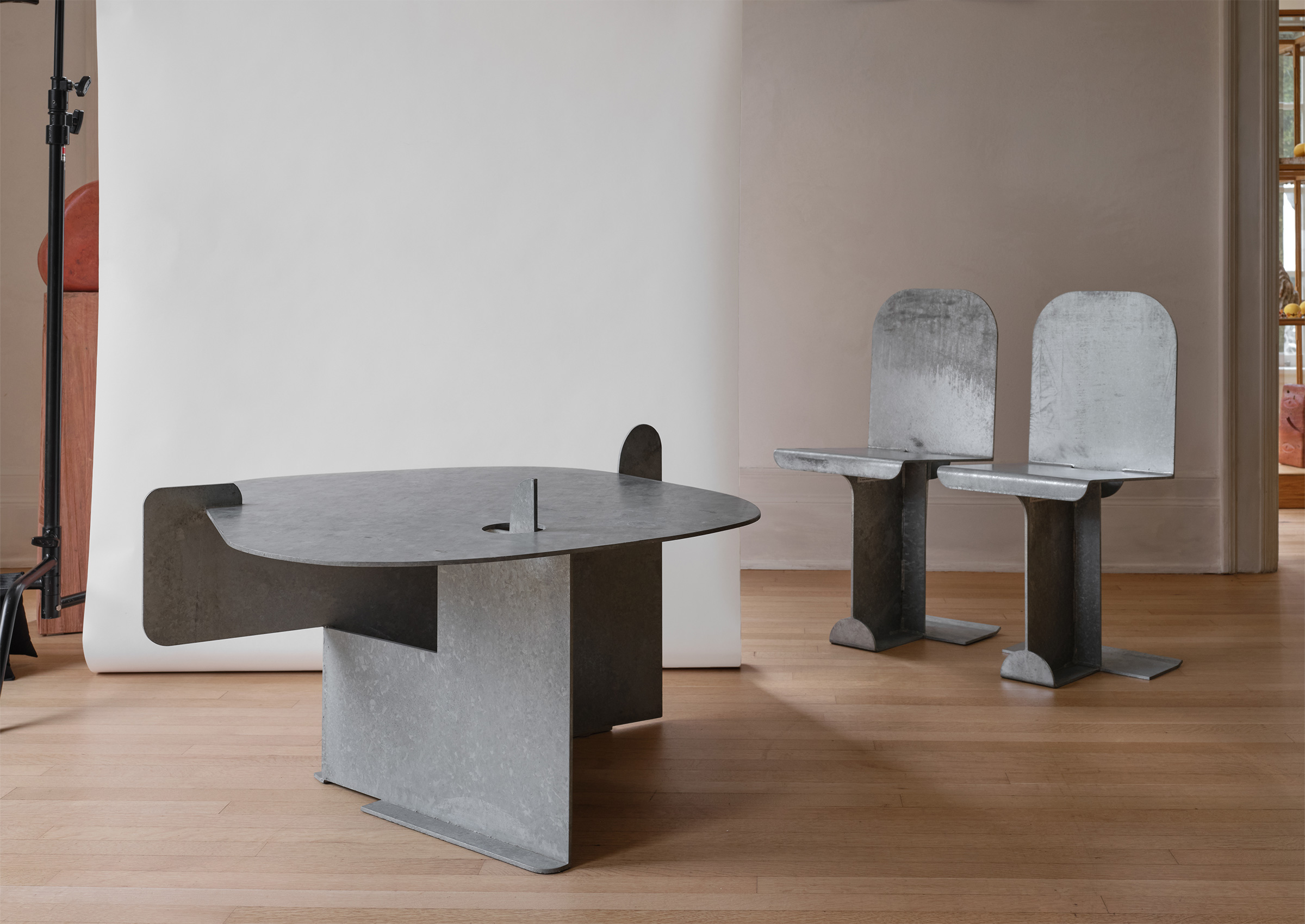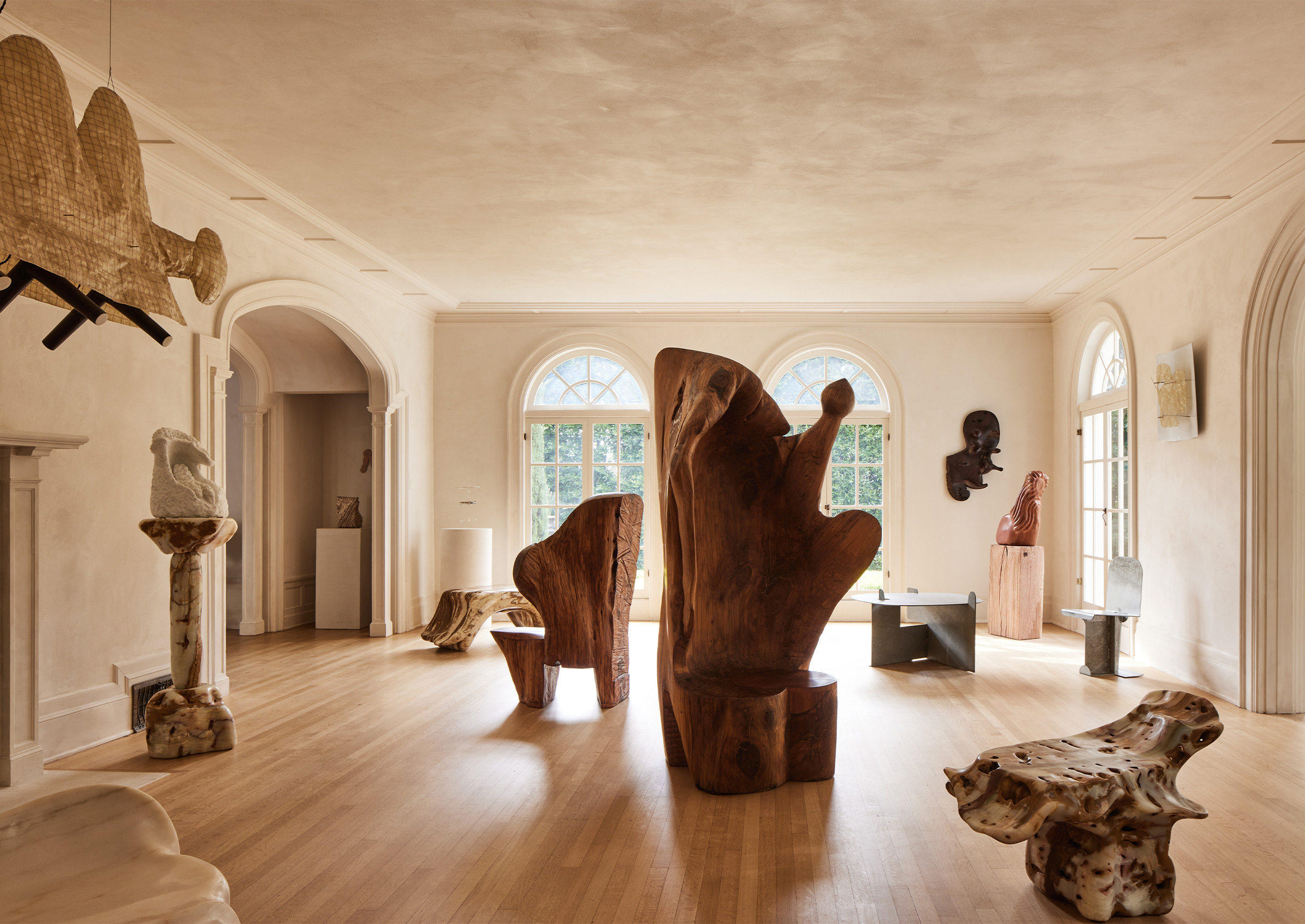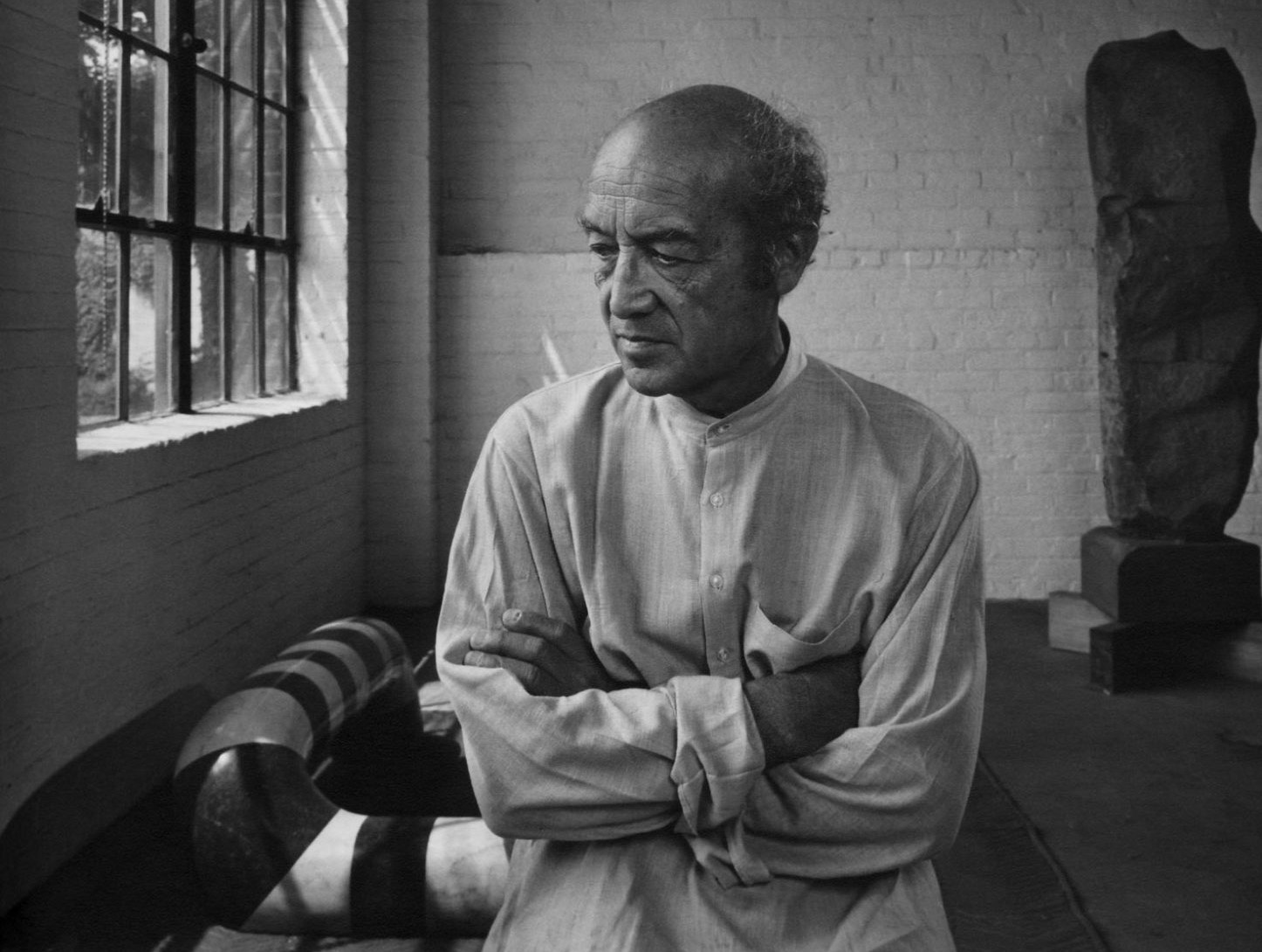Isamu Noguchi
Isamu Noguchi (1904–1988) was one of the twentieth century’s most important and critically acclaimed sculptors. Through a lifetime of artistic experimentation, he created sculptures, gardens, furniture and lighting designs, ceramics, architecture, landscapes, and set designs. His work, at once subtle and bold, traditional and modern, set a new standard for the reintegration of the arts.
Read More
Download Tearsheet
Noguchi, an internationalist, traveled extensively throughout his life. (In his later years he maintained studios both in Japan and New York.) He discovered the impact of large-scale public works in Mexico, earthy ceramics and tranquil gardens in Japan, subtle ink-brush techniques in China, and the purity of marble in Italy. He incorporated all of these impressions into his work, which utilized a wide range of materials, including stainless steel, marble, cast iron, balsa wood, bronze, sheet aluminum, basalt, granite, and water.
When Noguchi’s mother Léonie Gilmour met his father, she was a young writer and editor living in New York City. Gilmour was a white American of mostly Irish descent born in Brooklyn. His father Yonejiro Noguchi, an itinerant Japanese poet, was Asian. Noguchi was born in Los Angeles, but moved to Japan with his mother at the age of two and lived there until the age of thirteen. In the summer of 1918, Noguchi returned alone to the United States to attend high school in Rolling Prairie and then La Porte, Indiana, adding yet another layer to an increasingly complex identity. (He proudly identified as a “Hoosier” for the rest of his life.)
After high school, he moved to Connecticut to work briefly for the sculptor Gutzon Borglum, and then to New York City to attend Columbia University. While enrolled there as a premedical student, he also began taking evening sculpture classes on New York’s Lower East Side with the sculptor Onorio Ruotolo at the Leonardo da Vinci School of Art. He soon left the university to become an academic sculptor, supporting himself by making his first portrait busts.
In 1926, Noguchi saw an exhibition in New York of the work of Constantin Brancusi that profoundly changed his artistic direction. With a John Simon Guggenheim Fellowship, Noguchi went to Paris, and in 1927 worked in Brancusi’s studio. Inspired by the older artist’s forms and philosophy, Noguchi turned to modernism and abstraction, infusing his highly finished pieces with a lyrical and emotional expressiveness, and with an aura of mystery.
Returning to New York City as well as traveling extensively in Asia, Mexico, and Europe in the late 1920s through the 1930s, Noguchi survived on portrait sculpture and design commissions, proposed landscape works and playgrounds, and intersected and engaged in collaborations with a wide range of luminaries. Noguchi’s work was not well-known in the United States until 1940 when he completed a large-scale sculpture symbolizing the freedom of the press, which was commissioned in 1938 for the Associated Press Building in Rockefeller Center, New York City. This was the first of what would eventually become numerous celebrated public works worldwide, ranging from playgrounds to plazas, gardens to fountains, all reflecting his belief in the social significance of sculpture.
When Noguchi’s mother Léonie Gilmour met his father, she was a young writer and editor living in New York City. Gilmour was a white American of mostly Irish descent born in Brooklyn. His father Yonejiro Noguchi, an itinerant Japanese poet, was Asian. Noguchi was born in Los Angeles, but moved to Japan with his mother at the age of two and lived there until the age of thirteen. In the summer of 1918, Noguchi returned alone to the United States to attend high school in Rolling Prairie and then La Porte, Indiana, adding yet another layer to an increasingly complex identity. (He proudly identified as a “Hoosier” for the rest of his life.)
After high school, he moved to Connecticut to work briefly for the sculptor Gutzon Borglum, and then to New York City to attend Columbia University. While enrolled there as a premedical student, he also began taking evening sculpture classes on New York’s Lower East Side with the sculptor Onorio Ruotolo at the Leonardo da Vinci School of Art. He soon left the university to become an academic sculptor, supporting himself by making his first portrait busts.
In 1926, Noguchi saw an exhibition in New York of the work of Constantin Brancusi that profoundly changed his artistic direction. With a John Simon Guggenheim Fellowship, Noguchi went to Paris, and in 1927 worked in Brancusi’s studio. Inspired by the older artist’s forms and philosophy, Noguchi turned to modernism and abstraction, infusing his highly finished pieces with a lyrical and emotional expressiveness, and with an aura of mystery.
Returning to New York City as well as traveling extensively in Asia, Mexico, and Europe in the late 1920s through the 1930s, Noguchi survived on portrait sculpture and design commissions, proposed landscape works and playgrounds, and intersected and engaged in collaborations with a wide range of luminaries. Noguchi’s work was not well-known in the United States until 1940 when he completed a large-scale sculpture symbolizing the freedom of the press, which was commissioned in 1938 for the Associated Press Building in Rockefeller Center, New York City. This was the first of what would eventually become numerous celebrated public works worldwide, ranging from playgrounds to plazas, gardens to fountains, all reflecting his belief in the social significance of sculpture.


